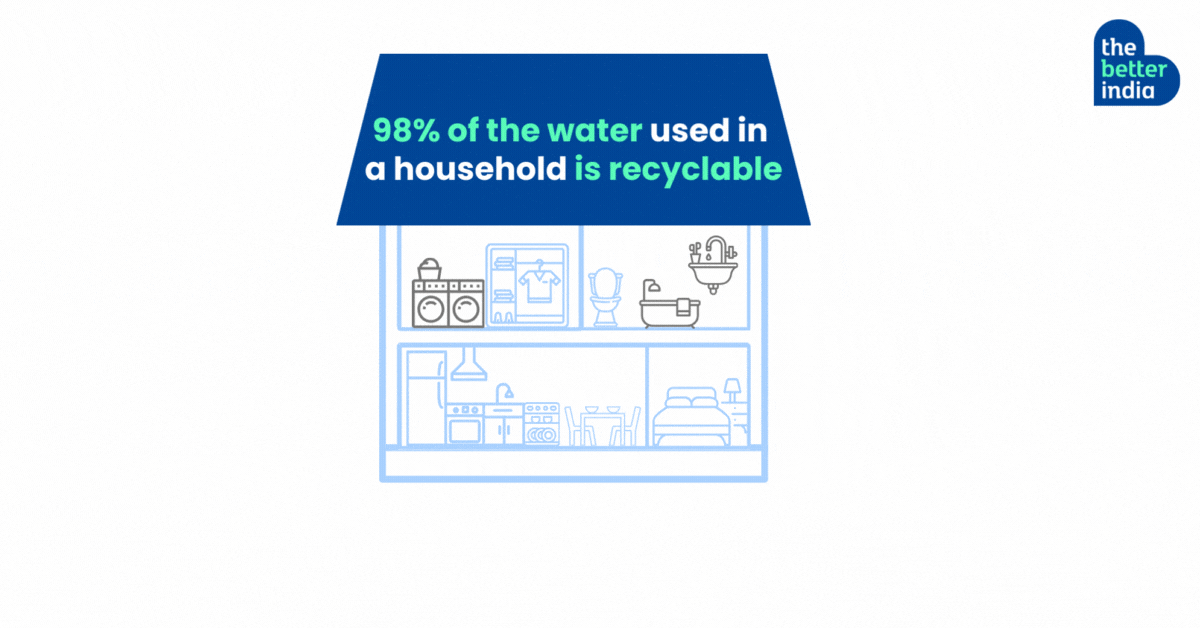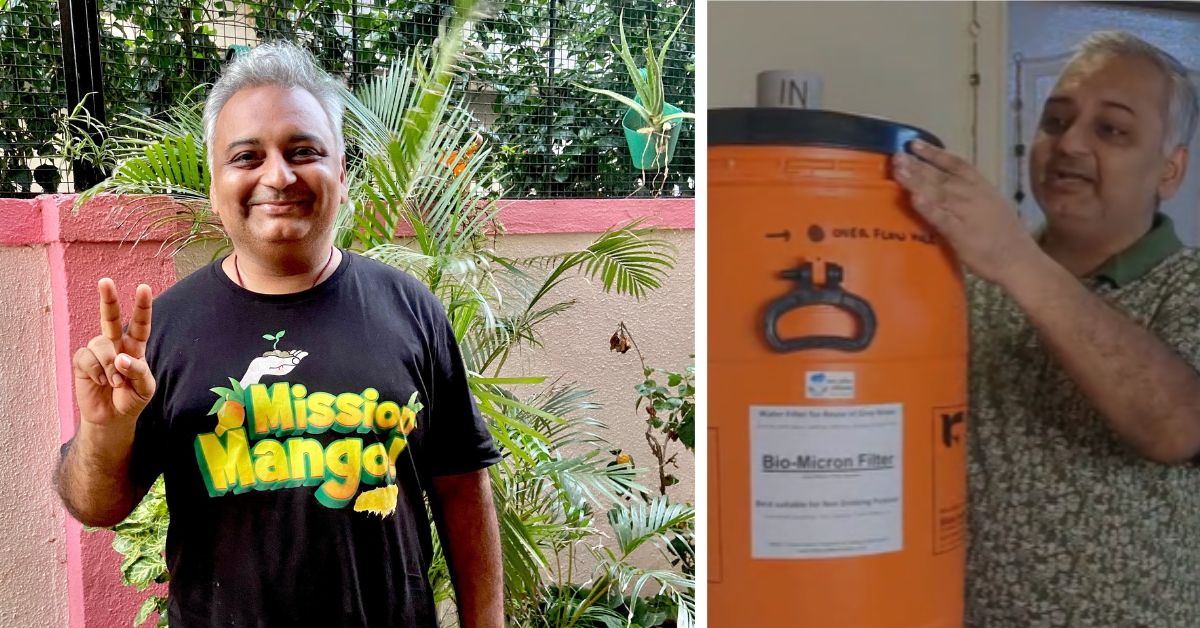In the face of a daunting water scarcity, India, poised to host a population nearing 150 crores, finds itself challenged with rapidly depleting water resources, particularly groundwater. The latest examples of acute water shortages are in cities like Bengaluru where 2024 has been the driest month so far. As per a Bangalore Mirror report, “More than half of Bengaluru’s borewells have dried up.”
Subhajit Mukherjee, a green activist and the founder of Mission Green Mumbai, says, “The groundwater levels have seen a staggering decrease largely due to the disappearance of lakes nationwide.”
As the quality and quantity of available drinking water dwindles, the Government of India rallies behind initiatives like the Jal Jivan Mission, stressing the critical need for water conservation through reuse. However, the question of whether only institutional efforts can remedy the issue dwindles.
The Better India reached out to the green activist, earlier known for his innovative methods to harvest rainwater, to understand the nuances of water scarcity in India and how one can use greywater in daily life.
What is greywater and why reuse it?
The heart of the issue of water shortage lies in the disproportionate use of potable water — a staggering 98 percent of water supplied to Indian homes is used for purposes other than drinking and cooking.
“We should understand that only two percent of the water supplied to our homes is used for drinking and cooking. The remaining 98 percent, used for non-drinking purposes, can always be catered to through recycled and filtered water,” he points out.
Furthermore, urban habits, such as using fresh water for toilet flushing, contribute extensively to water wastage. “Flushing alone gulps down 35 percent of a typical household’s water consumption, prompting experts to advocate for the use of greywater and underground saline water for these purposes, especially in cities like Mumbai where groundwater quality is infamously poor,” he says.

Explaining what greywater is, Mukherjee says, “When we use freshwater in our taps or from our collection tank, it is typically divided into two categories — sewage water and greywater. Sewage water comes from flushing toilets, while greywater originates from all other activities, such as taking baths, washing clothes, washing utensils, mopping the floor, and any other activities that do not involve sewage or urine.”
Unlike black water, which contains sewage and toilet waste, greywater is relatively clean and can be recycled for various non-potable uses, such as irrigation, flushing toilets, and landscape watering.
There are many cost-effective filtration methods with a 1,000-litre capacity. This is enough for every family to reuse water, the activist says.
The key point to remember is that it contains soap, detergent, food particles, grease, and hair, but generally lacks the high levels of contaminants found in black water.
How to set up a filtration tank?
“The consumption of quality water is crucial as it directly impacts the quantity of water we need. Drinking water and cooking water must be of high quality since they directly enter our bodies and affect our health,” he says.

Explaining why recycled water can be a viable option for water conservation, he adds, “For non-drinking purposes, such as mopping the floor or flushing toilets, where there is no direct personal contact with the water, using recycled greywater is a viable option that requires minimal effort.”
Recycled greywater is safe for use as it does not involve direct contact with the human body nor is it used for consumption, hence not affecting our physical health.
“Special emphasis should be placed on toilet flushing, as in most urban areas, 35% of the freshwater supplied by the piped water system is wasted on flushing toilets every day. If we replace that with greywater, at least 35 percent fresh water will be saved,” he notes.
Setting up such systems, contrary to public scepticism about cost and complexity, proves neither difficult to install nor expensive, he shares.
“A basic home setup for recycling 1,000 litres of greywater can be established with an initial investment of approximately Rs 10,000. Moreover, larger facilities like housing complexes or educational institutions can implement extensive recycling systems, with costs not exceeding Rs 20,000,” he says.
These systems not only recycle water but also allow for percolation into the ground, aiding groundwater recharge and helping mitigate urban heat island effects.
Explaining how the system works, he says, “Greywater filtration has various quality standards depending upon the reuse that we have focusing on. If we want to use it for flushing purposes we can have a simple sand filter which is a natural resource. However, if we want to use it for mopping floors or washing of car then we use a 5 Micron filter which will filter out all the detergent and harmful oil from the water.”
Internationally, nations like Dubai and Singapore have set precedents by filtering and repurposing sewage water for drinking. “Drawing inspiration from such models, we should focus primarily on non-potable applications to ease into broader acceptance and implementation of water reuse practices,” he says.
Talking about the initial scepticism and hesitation among people he shares, “Whenever I discuss greywater reutilisation with people, the biggest challenges they encounter are understanding what greywater is and the misconception that it is an expensive project requiring modern imported patented filters costing lakhs of rupees.”
Despite the initial hesitance often encountered when introducing the concept of greywater reuse, the tangible benefits — both economic and environmental — quickly turn scepticism into motivation.
He continues, “When I explain that it can be done for just 20,000 rupees or even less, they feel more motivated. Additionally, knowing that the system requires only a 10 by 10 feet space further encourages them. Ultimately, everyone facing water shortages today understands the importance of reusing water, and these clarifications make them more likely to implement greywater reutilisation.”
In overcoming the hurdles of public perception and logistical application, it is a promising pathway to not just alleviating India’s water scarcity, but also setting a benchmark in sustainable water management globally.
(Edited by Pranita Bhat; All Pictures Credit: Subhajit Mukherjee)
No comments:
Post a Comment